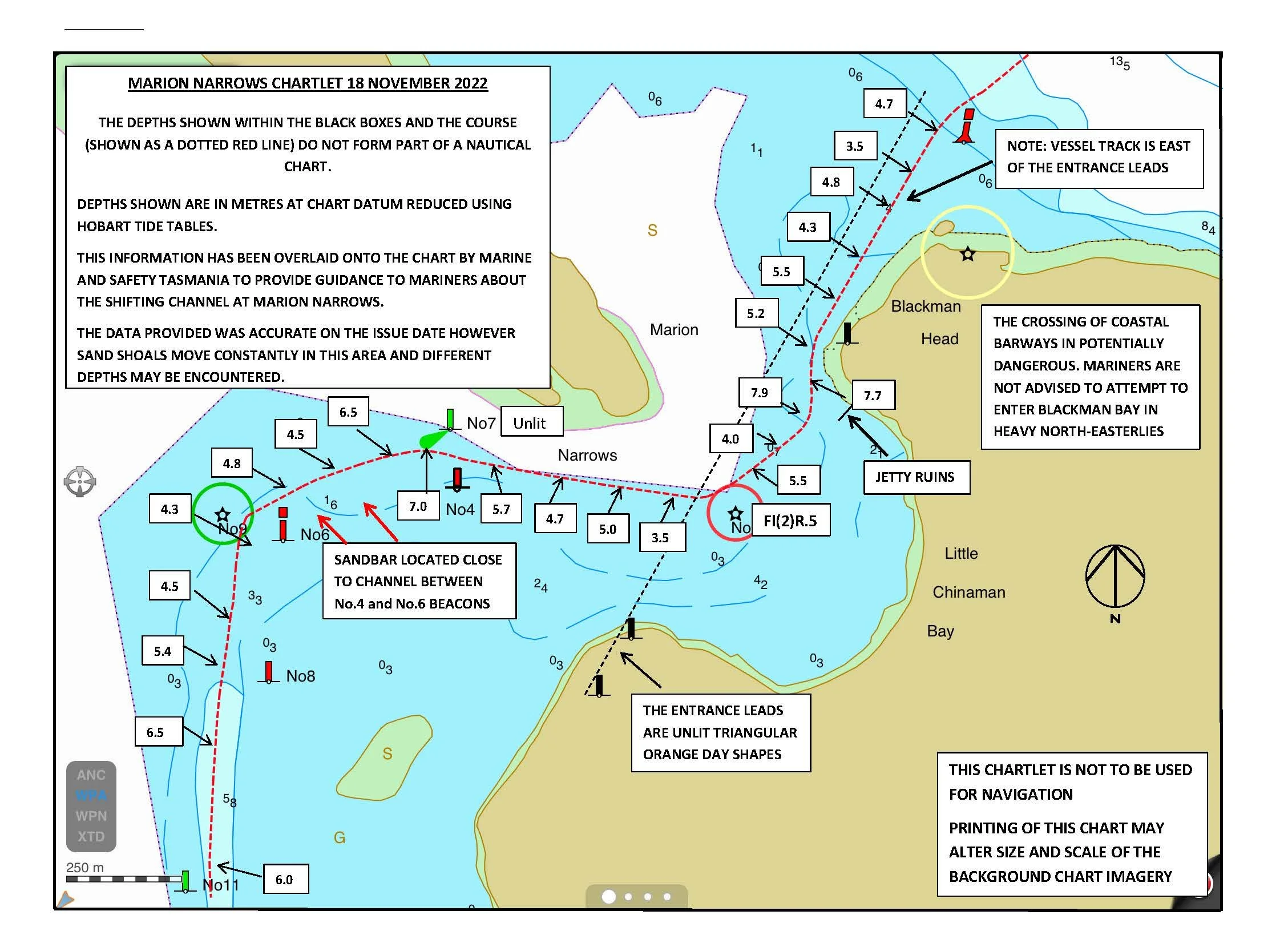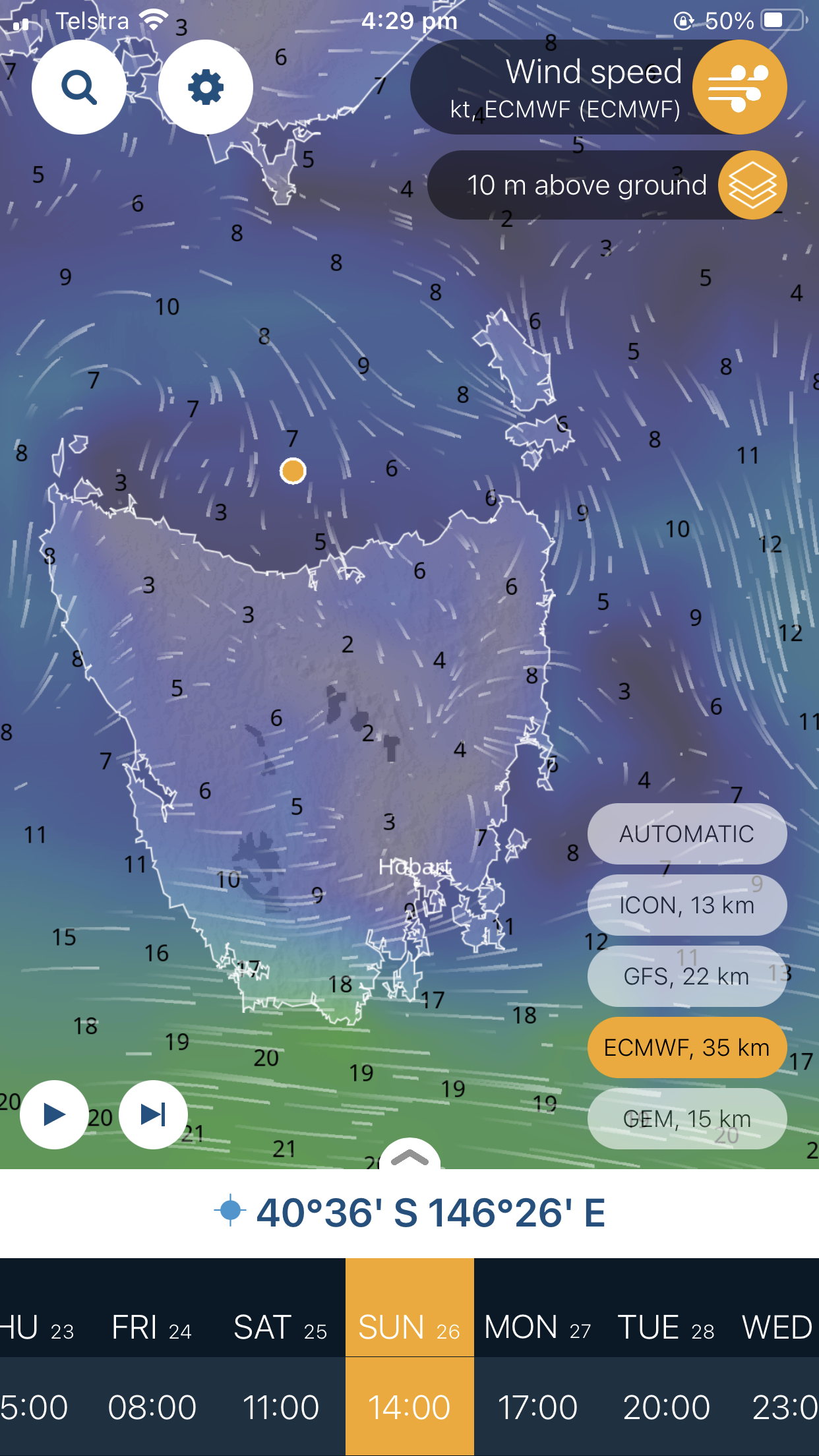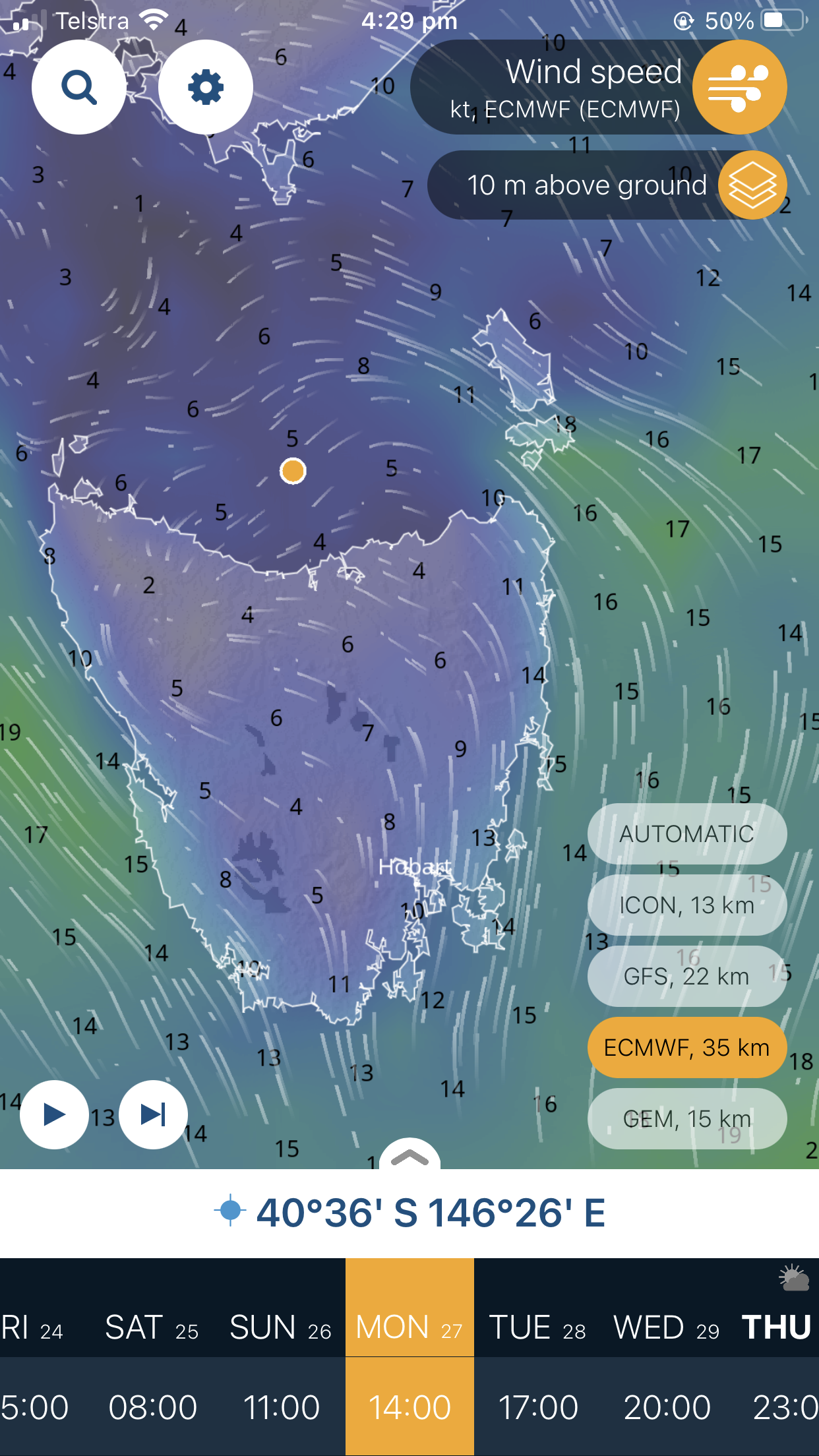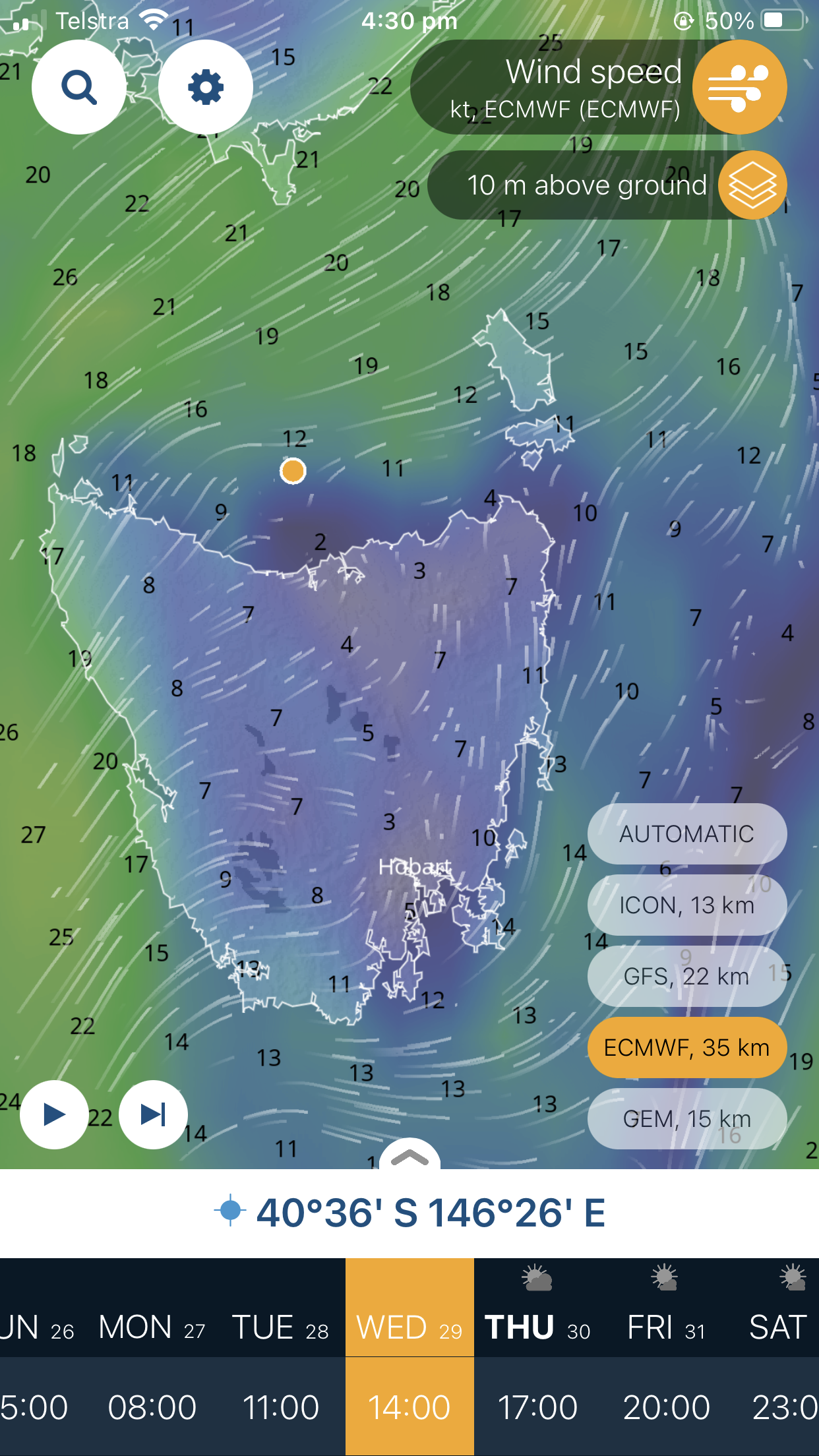Returning home as the days get shorter
Image Mark Chew
The annual roundtrip of the Arctic tern is more than 71,000 km. As they can live for more than 30 years, the total distance flown in a tern’s life may exceed 2,4 million km, the equivalent to 3 return journeys to the moon. Not bad for a bird with a body mass of little over 100 grams.
By comparison the autumn migration from Hobart to Melbourne of an old but comfortable 14 ton yacht doesn’t seem like much of an effort, but when FAIR WINDS tied up yesterday night at the Royal Melbourne Yacht Squadron after three months away cruising in southern waters, I felt a deep sense of achievement. Someone once told me that you should never look at the cost of owning a wooden boat in dollars per year, but dollars per mile sailed, and the only sensible way to reduce that number is to sail more miles. Since we left Victoria in December 2022 we would have sailed close to 2000 nautical miles, mostly in comfort, rarely upwind.
Our Tasmanian sailing summer can be loosely divided into four chapters.
A family holiday aboard, during January
And the delivery Back home
The first three of these have been covered in one way or another in SWS.
The trip back home had been left a little late in the year, as work rudely intruded on our sailing life and so this became more of a delivery than a cruise. It was never meant to be that way, but sometimes the weather windows conspire and force you to push onwards even when island anchorages beckon, and this was the case this time.
There were three of us onboard. Chris Clapp, my close friend, a highly experienced sailor and navigator and the rock upon which most of our sailing depends. Molly Baxter a young, wonderfully keen and passionate sailor who is part of the NO MAN’S LAND team. And myself.
A few things to check before a long trip… Whats the moon doing? This week it was almost finished its first quarter, which I always think is its most elegant phase, big enough to light a dark night at sea, yet still finely elegant and growing, without the sadness of the waning crescent.
How much daylight will we have? At this time of year at 40 degrees south, the eastern sky begins to brighten at about 0630 and the last glow leaves the west around 1945 so we will have almost 11 hours of darkness each day.
And then of course there’s the factor that begins to become an obsession a few days out from departure, the weather. Its often a bit of a jigsaw and sometimes the pieces don’t fit neatly together; the different global forecast models, the Bureau’s interpretation of those models, the sky and clouds around you, some historical experience, the tidal gates of Banks Strait and Port Phillip heads and the enemy of all safe sailing, the deadline to return to life on the land.
We flew down to Hobart last Saturday and climbed aboard at the Prince of Wales Marina in Derwent Park. Without a hint of “cash for comment”, I would highly recommend this marina to anyone leaving their boat in Hobart. I’d be the first to admit that its not in the most picturesque location, next to the zinc smelter and Incat, but it has a sort of industrial charm of its own. And the staff are accomodating and friendly (thanks Eddie), its secure, the showers are hot and clean and the laundry works a treat. Once aboard we made the 30 minute motor down to the free pontoons outside Constitution Dock for provisioning and then off down the Derwent to get close to the Dennison Canal for its 8am opening on Sunday morning.
The weather at this point was looking good for the first half of the trip and unfathomable for the Bass Strait portion, but we decided to push on. A quiet night in Monk Bay at the top of the Tasman Peninsular brought a haul of flathead in 30 minutes. They were on the hook before the weight hit the sandy bottom so we were already a meal ahead with the catering plan.
Image Molly Baxter
Passing through Dennison Canal and Blackman’s Bay takes about 45 NM of the trip around the Tasman Peninsular and makes for an interesting challenge. You wouldn’t want to try it with a draft of more than 2 meters and make sure you check the latest MAST chartlet
In the past you used to be able just to roll up at either end of the canal, radio in and expect the bridge to be opened, but a new rule seems to have come into force, requiring a days notice.
Once through the canal on Sunday morning, with a quick stop for matches for the stove at the Dunalley General Store, it was a gentle 40nm sail up to Schouten poassage to anchor for the night and await the forecast Southerly to drive us up the coast.
The Anchorages around the Freycinet Peninsular are very special. There’s protection from every wind direction if your prepared to move about, and the crystal clear water and spectacular mountains make it a small, but perfectly formed cruising ground. But with Bass Strait looming we had to push on and one night in Schouten Passage was all we could afford.
Bald Hill on Schouten Island-Image Molly Baxter
Timing the run up the east coast involves judging your boat speed over the eighty miles to arrive at Eddistone light about 2 hours before the tide turns in the middle of the Banks Strait. This means that you get maximum benefit from the fast moving flood into the middle of Bass Strait. If you don’t nail it exactly its not really a problem but if you get completely wrong it makes for an uncomfortable, slow and even dangerous passage between Clark Island and the NE corner of Tasmania. The tides on Monday night meant that we needed to be at Eddistone at 2130 and from then on our speed increased under two reefs and poled out headsail as we followed the wind round and headed east along the top of Tasmania with out having to gybe. Its fun to see a consistent 9 knot SOG, in a boat with a hull speed of 8 knots! At this stage it began to rain and didn’t really stop for any length of time until we tied up in Melbourne. It’s amazing how quickly dampness spreads around a wooden boat down below. However hard you try to keep wet weather gear away from the bunks, the moisture seems to permeate everything. And the wind kept building
Soon we put the main away with and sailed on under headsail alone with our new Hydrovane self steering behaving impeccably. I really love this piece of equipment. (again not a paid comment!). It’s beautifully engineered, intuitive to use, silent, requires no battery power and best of all works a treat. We sailed 300 NM with out a hand on the helm, deeper than 160 TWA in 20-30 knots and 2.5 metre seas and she didn’t gybe the boat once, which is more than I can say for most of us humans on board. We’ve named the steering vane Carly. I’ll let you work out why!
Once into Bass Strait the various weather models were aligning, and it seemed clear that the further west we could get along the top of Tasmania, the easier out trip to the Port Phillip heads would be once the SW change came through.
So we continued with the big dog leg left, rain coming down, rolling gunwhale to gunwhale making 7 knots. We ran watches during the night of one on two off, which just about worked, but you get a lot of practise getting in and out of you wet weather gear PFD and sea boots!
About 40nm north of Stanley the wind died and we turned north to the heads in a sloppy left over seas state. As forecast, it went north, then north west, then west and slowly built through the night. By morning we had 25 knots SW and were flying towards the heads and looking good for the flood window of 1600 to 2200. It was important we made that time frame as with a big tide running and 30+ knots forecast it would have been a painful 6 hours reaching back and forwards waiting for the next opportunity.
Coming through the heads was exciting if a little nerve wracking with 3 meter waves off Portsea and an in flowing tide of over 4 knots. We got through in day light and were shot through the rip and up the west channel, thankful for the relatively flat water and the opportunity to cook the first hot dinner in 48 hours. Puy Lentils and Pork Sausage never tasted so good!
Tying up in the dark and rain at St Kilda RMYS was a rushed affair. All three of us were keen to get off the boat after 80 hours onboard, for a shower and more than two hours sleep.
We scurried down the pier and made our seperate ways home back into the real world of work obligations, supermarkets and social media.
But come to think of it… I’m not sure which world is more real.












